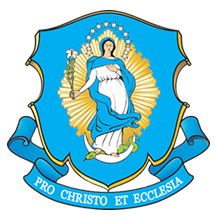
Could it be that Kateri was named a saint precisely in our century to remind us to offer up our own prayers and fasting for the continued conversion of our nations and to awaken us to renewed apostolic zeal?
Welcome to "North American Sanctity," a new series on holy men and women, boys and girls, saints and those on the road to sainthood, from Canada, the United States, and Mexico. Some will be familiar, others less so; but all are inspiring!
By Kimberly Bruce
She is called the “Lily of the Mohawks” and the “Genevieve of New France”: St. Kateri Tekakwitha (feast day April 17), the first Native American to be canonized.
This humble Mohawk princess was beatified by Pope St. John Paul II in 1980 and canonized in 2012 by Pope Benedict XVI, who entrusted her with “the renewal of the faith in the first nations and in all of North America.”
New York childhood
Saint Kateri was born in 1656 in what is now Fonda, New York, about 45 miles northwest of Albany. The St. Kateri National Shrine and Historic Site welcomes pilgrims today.
The region in Kateri’s time was hostile to Christianity. Three of the eight North American Martyrs (St. Isaac Jogues, St. Jean de la Lande, and St. René Goupil) had been brutally killed by members of the Mohawk tribe in the area a few years prior to her birth. Today’s North American Martyrs Shrine is located less than five miles away.
Kateri’s father was a Mohawk chief, and her mother a captured Algonquin Christian woman who had become his wife. It was from her mother that Kateri learned sacred hymns and simple knowledge of the Catholic faith as a young child.
When Kateri was four years old, an outbreak of smallpox took the lives of her father, mother, and baby brother. Kateri herself was left with permanent scars on her face and damaged eyesight from the disease. The tribe consequently named her “Tekakwitha,” meaning, “she who bumps into things.”
Kateri was then adopted by aunts and an uncle, who became the next tribal chief.
Christianity arrives
A new peace treaty with the French required the presence of Jesuit missionaries in villages with Christian captives. The new chief had to tolerate these “Blackrobes,” as he called them, but he did not like their presence in his village. Three missionaries even lodged with the chief and his family when they came into town. Their words had a great influence upon Kateri, but she dared not let her uncle know.
By the age of 19, however, Kateri asked to be baptized, and took the name Kateri, meaning “Catherine,” after St. Catherine of Siena.
Because she was now a Christian, Kateri withstood great persecution from those in her tribe. She refused to work on Sunday, as it was the Lord’s Day, so the tribe withheld food from her on Sundays. They threw stones at her, mocked her, slandered her, and even tried to marry her off. Pope Francis observed:
Witnessing to the Gospel is not only about what is pleasing; we must also know how to bear our daily crosses with patience, trust, and hope. Patience … to tolerate difficulties and also to tolerate others, who are sometimes annoying or cause difficulties. Kateri Tekakwitha’s life shows us that every challenge can be overcome if we open our hearts to Jesus, who grants us the grace we need.
Similar sanctity
Saint Faustina, too, suffered misunderstandings and persecutions from those within her order. She wrote:
Once, when I was in the kitchen with Sister N., she got a little upset with me and, as a punishment, ordered me to sit on the table while she herself continued to work hard, cleaning and scrubbing. And while I was sitting there, the sisters came along and were astounded to find me sitting on the table, and each one had her say. One said that I was a loafer and another, ‘What an eccentric!’ I was a postulant at the time. Others said, ‘What kind of a sister will she make?’ Still, I could not get down because sister had ordered me to sit there by virtue of obedience until she told me to get down. Truly, God alone knows how many acts of self-denial it took. I thought I’d die of shame. God often allowed such things for the sake of my inner formation, but He compensated me for this humiliation by a great consolation. During Benediction I saw Him in great beauty. Jesus looked at me kindly and said, My daughter, do not be afraid of sufferings; I am with you (Diary of Saint Maria Faustina, 151).
Kateri was even threatened by a young Indian man one day. Mad with rage, he rushed upon her, tomahawk raised, to kill her. But due to her calm demeanor, and resilient willingness to accept death rather than deny her faith, the warrior dropped his weapon and went away.
Sanctuary
Persuaded to escape by a priest, Kateri made the difficult journey 200 miles north to a Catholic mission near Montreal in present-day Quebec. There she received her first Holy Communion and later took a vow of perpetual virginity.
At this mission, Kateri prayed, offered extreme fasting for the conversion of her nation, and performed works of mercy. Her health badly deteriorated, and she died three years after her arrival, on Wednesday of Holy Week, April 17, 1680. She was just 24 years old.Her final words were: “Jesus, I love thee.”
Moments after her death, two Jesuits and a crowd of Native Americans witnessed the scars on her face miraculously disappear!
A miracle
Three hundred years later, in 2006, the parents of six-year-old Jake Finkbonner from Washington state prayed for St. Kateri’s intercession, asking for Jake to be healed of a deadly flesh-eating disease.
A day later, the boy was cured. This was the final miracle needed for Kateri’s canonization.
Could it be that Kateri was named a saint precisely in our century to remind us to offer up our own prayers and fasting for the continued conversion of our nations and to awaken us to renewed apostolic zeal? She is certainly a model of the strength of intercessory prayers, faithfulness, and perseverance.
Saint Kateri Tekakwitha, we ask your prayers for renewed evangelization efforts on our behalf and for your continued intercession for the conversion of our North American continent.
Saint Kateri, pray for us!
Next in the series: Blessed Marie-Anne Blondin, April 18.
Previous article
Photo by Dieter Kaupp, 2014
{shopmercy-ad}
















